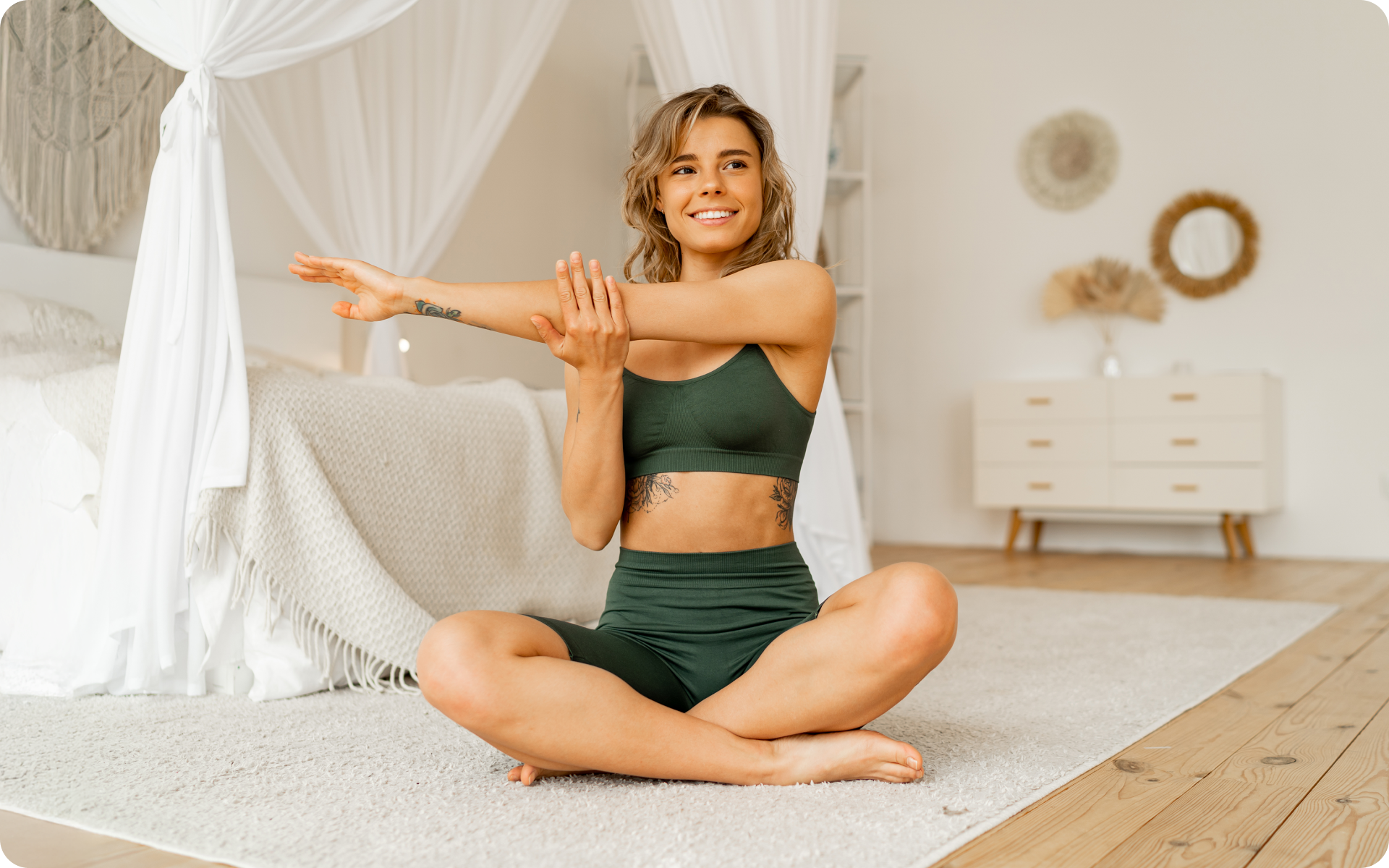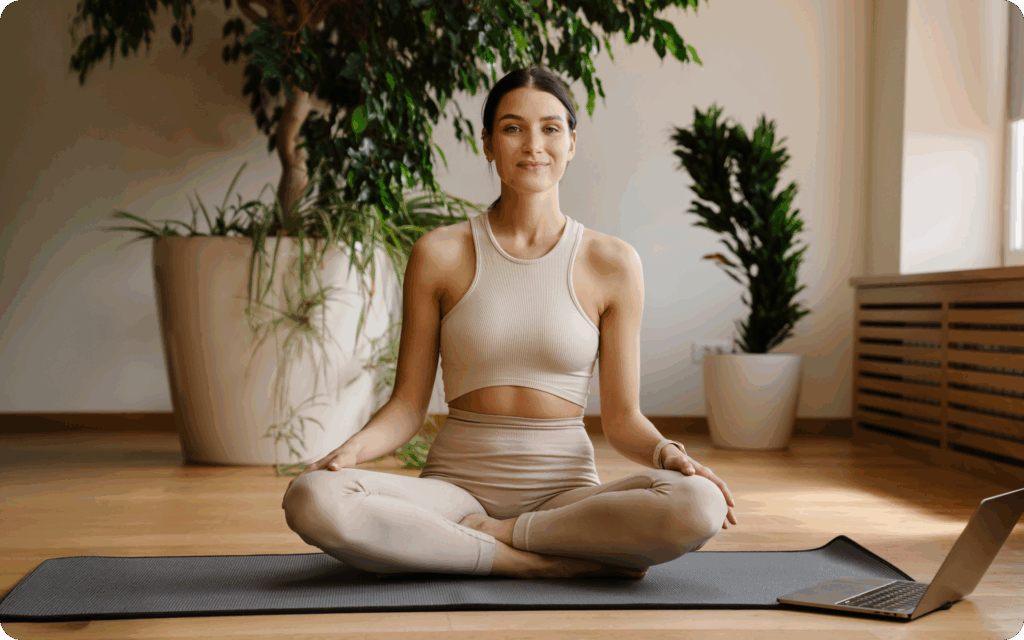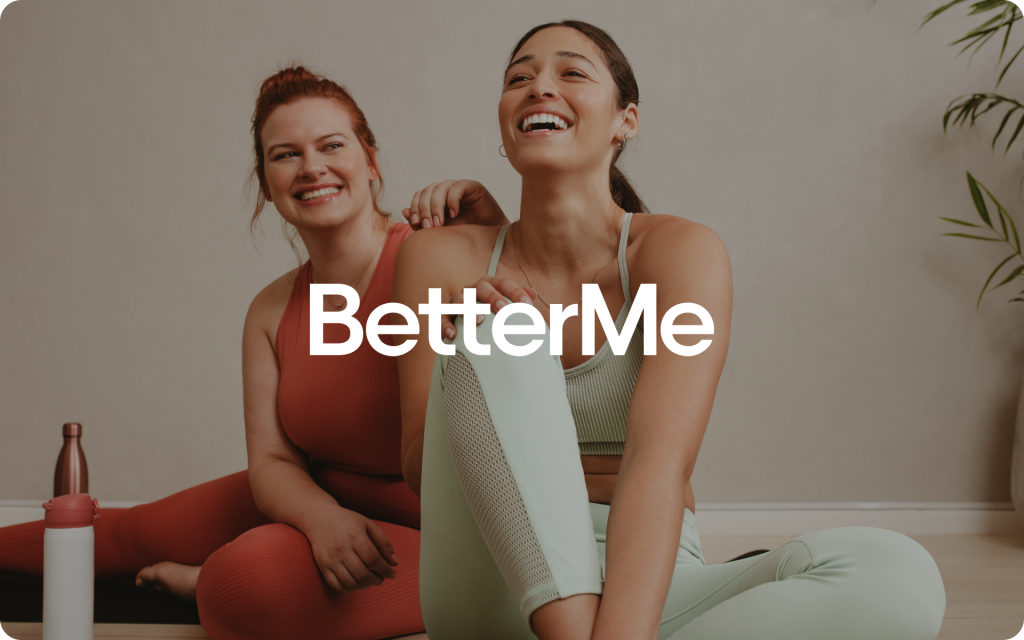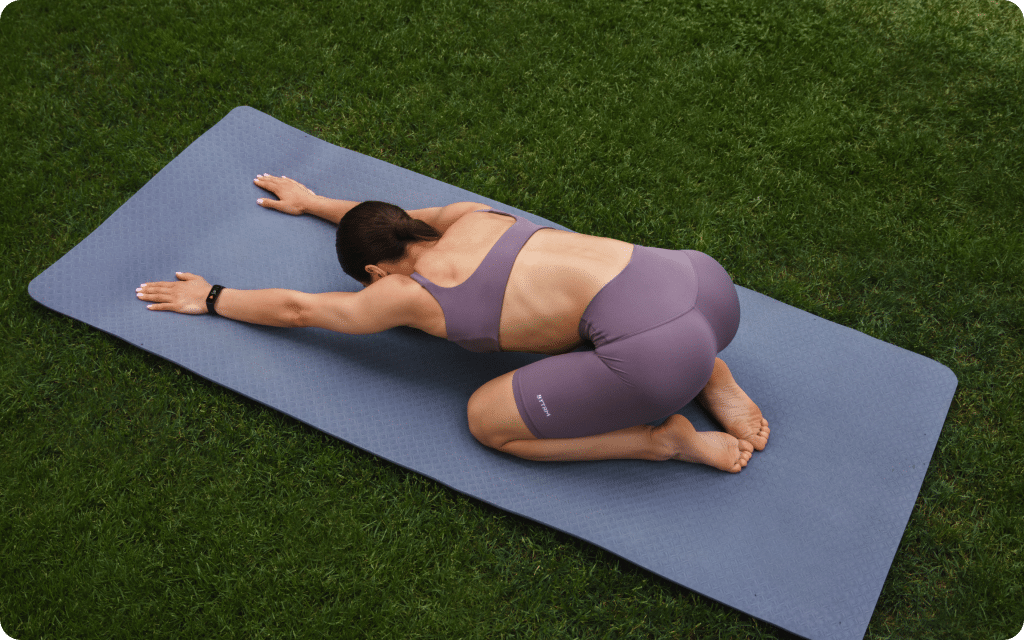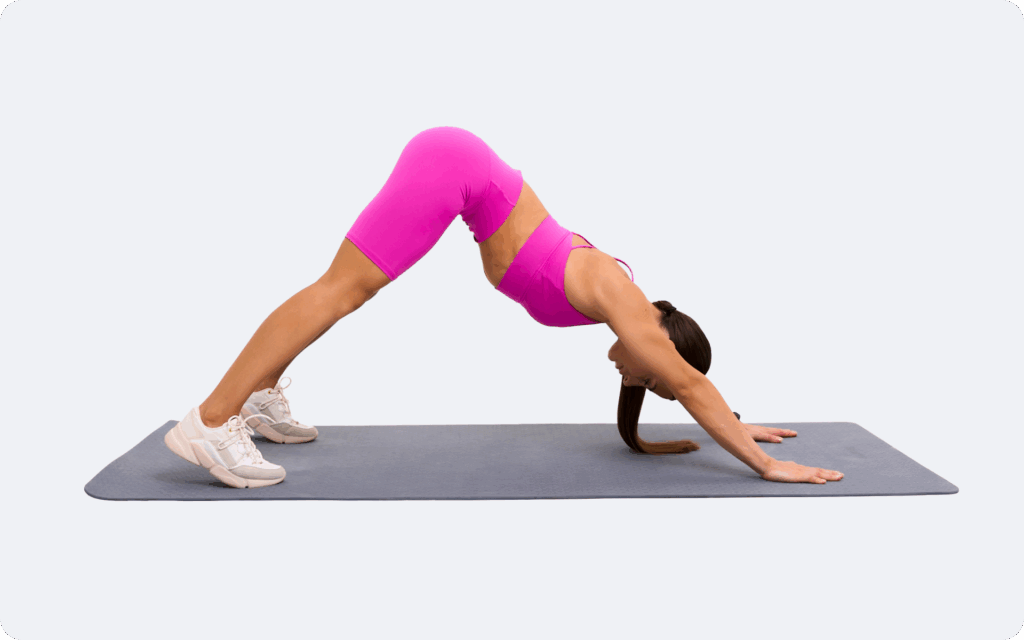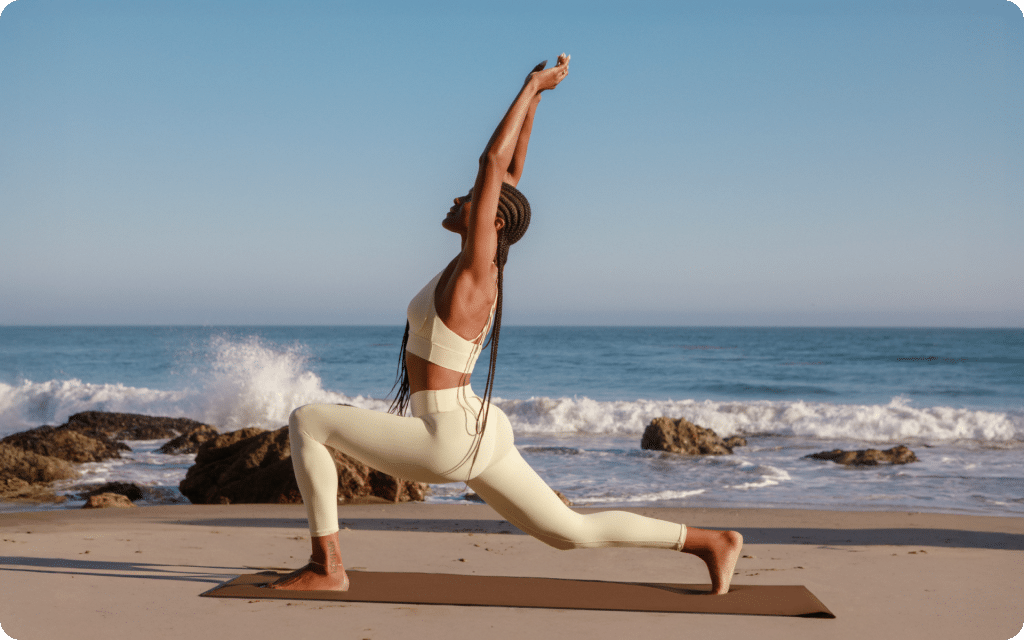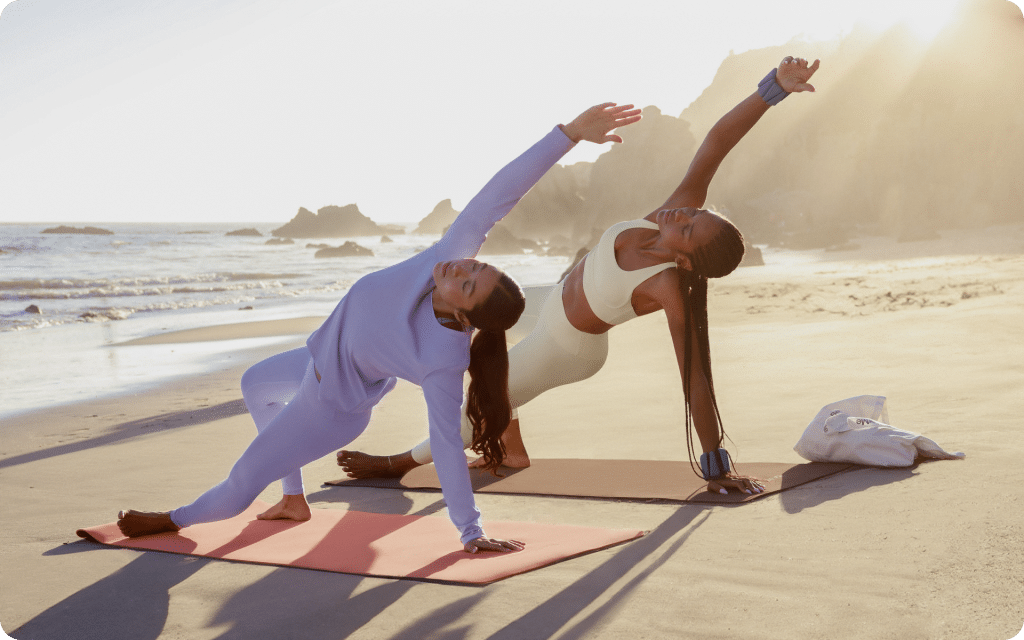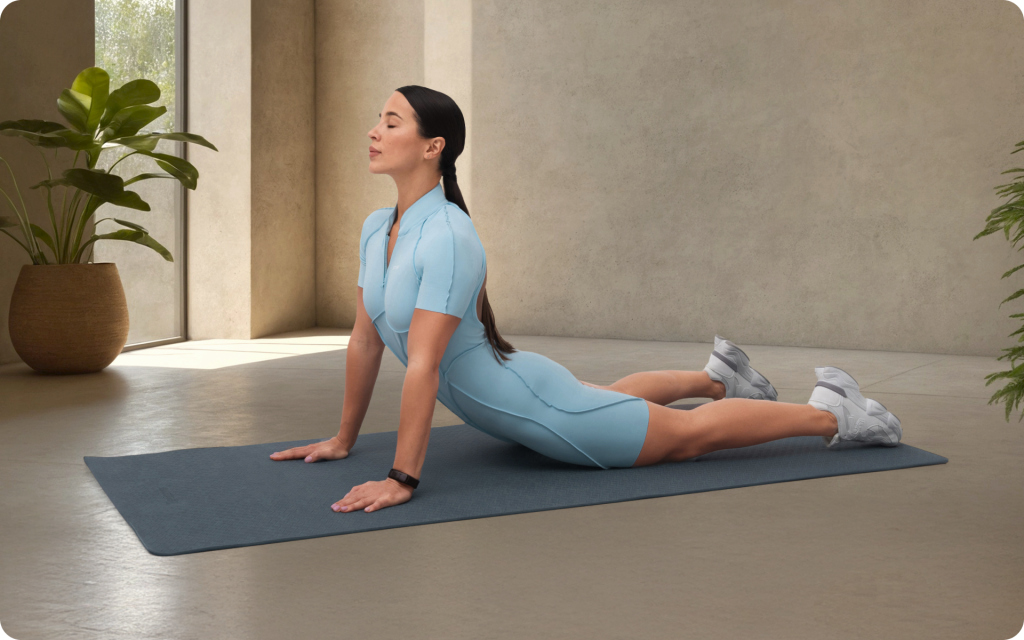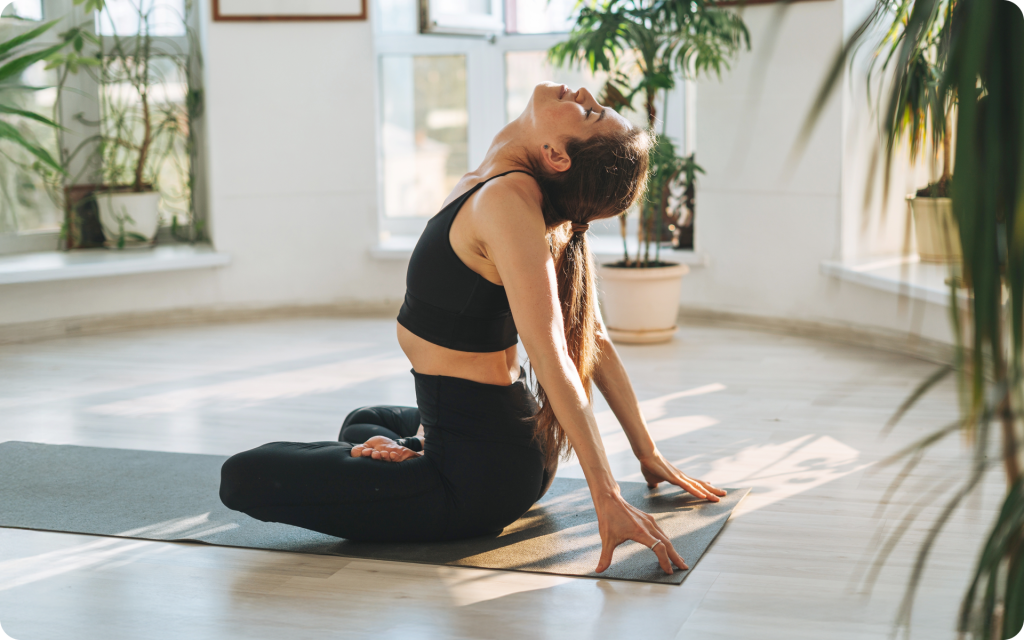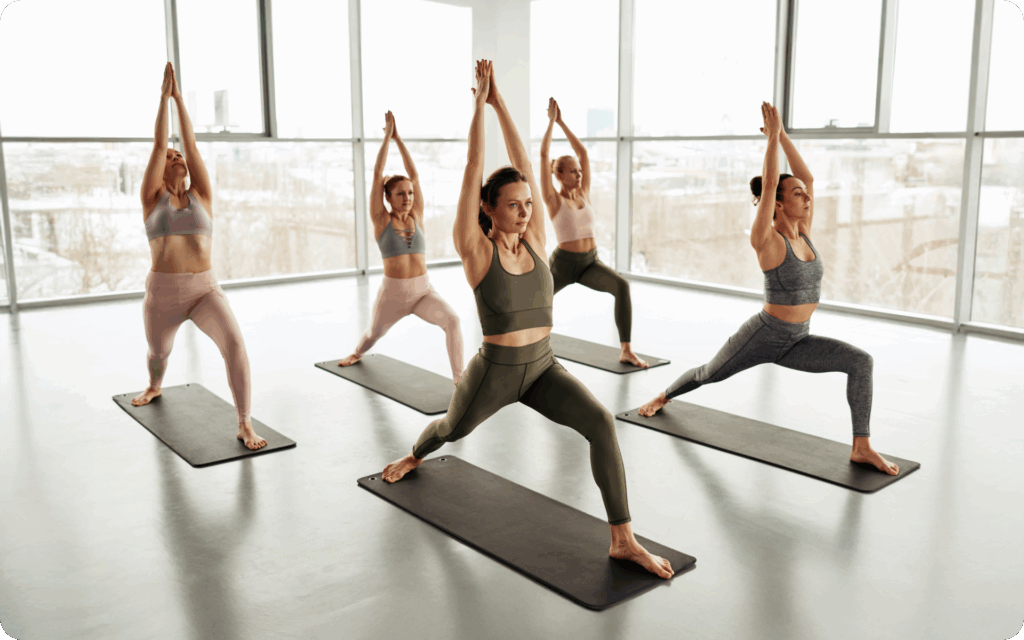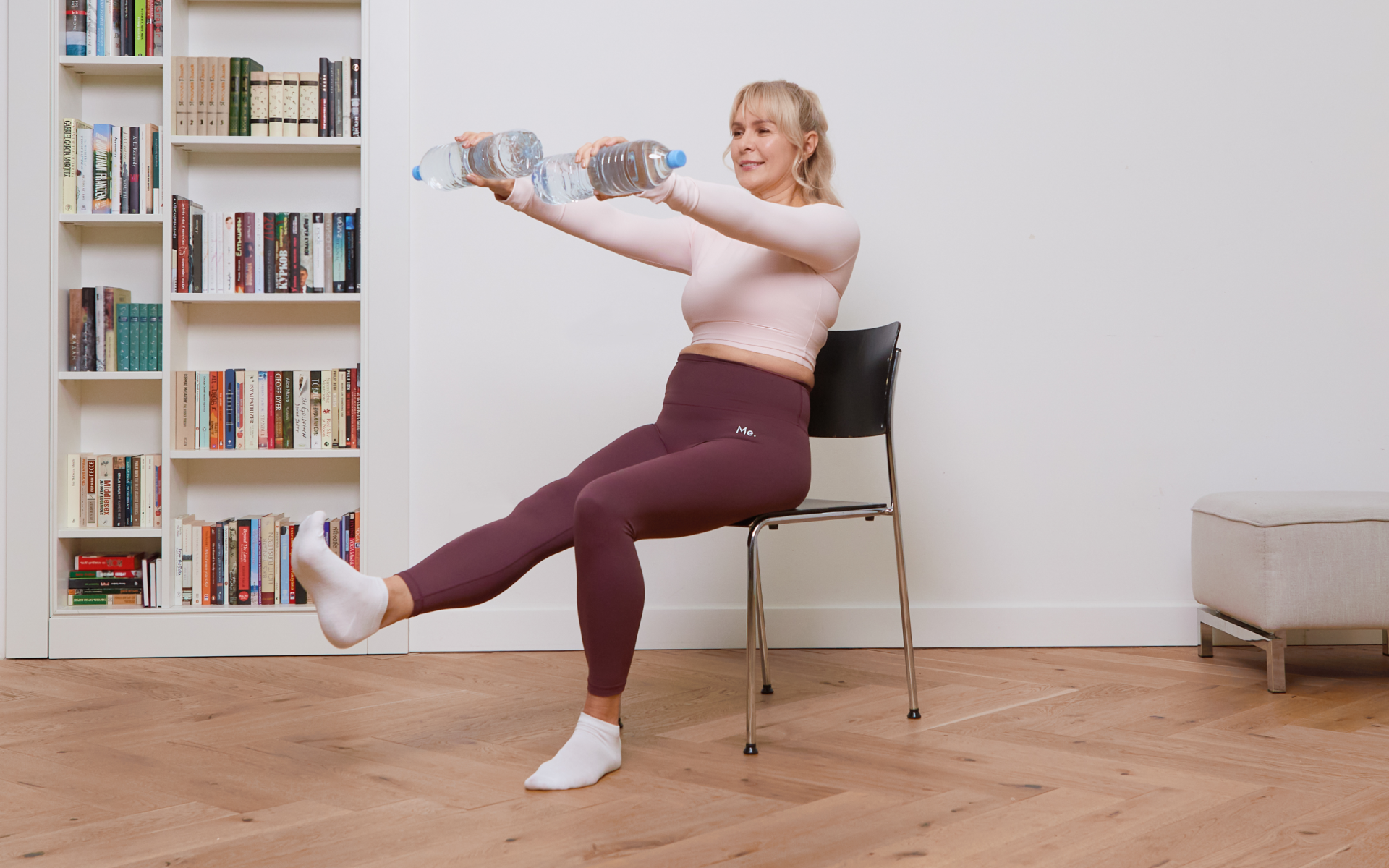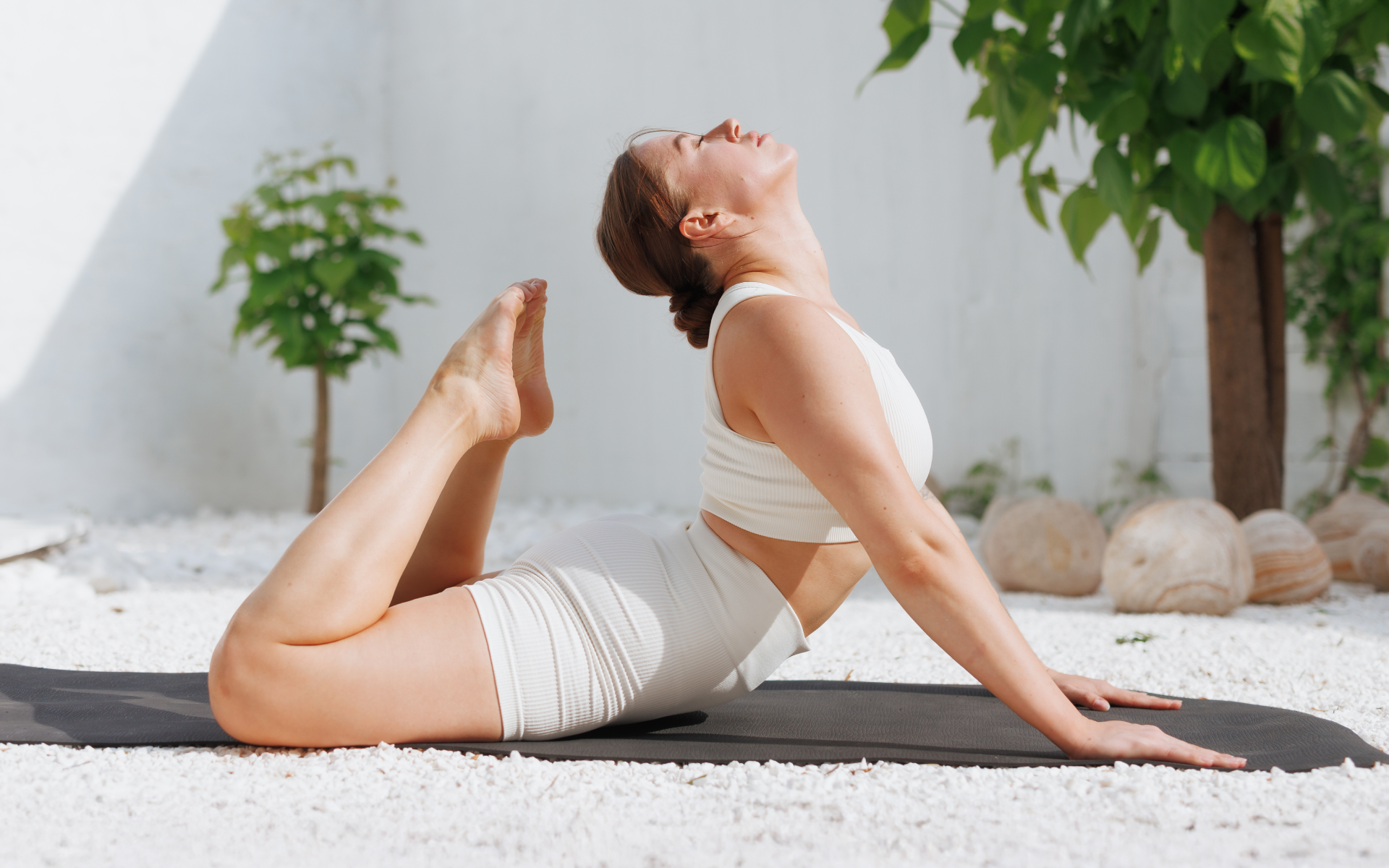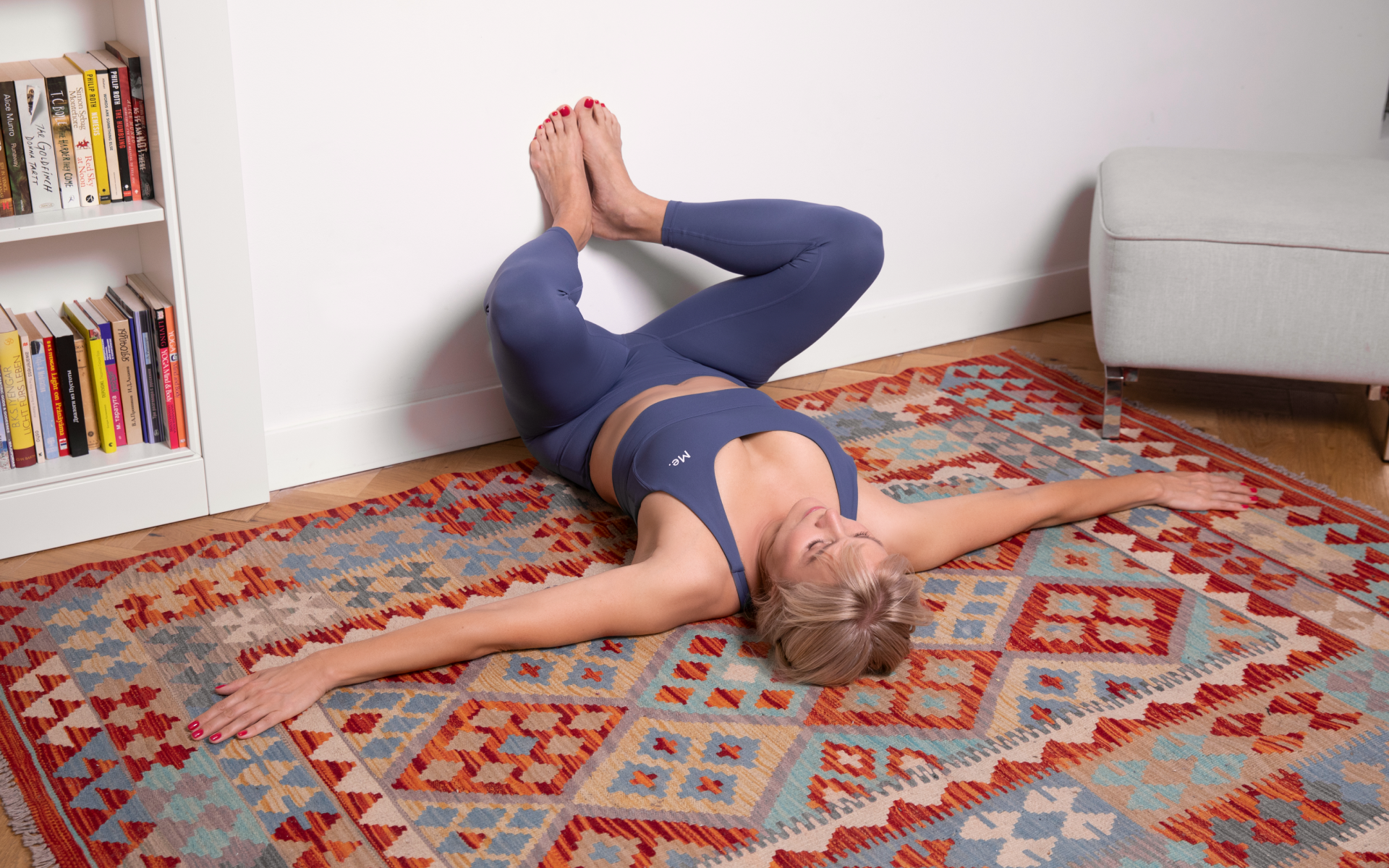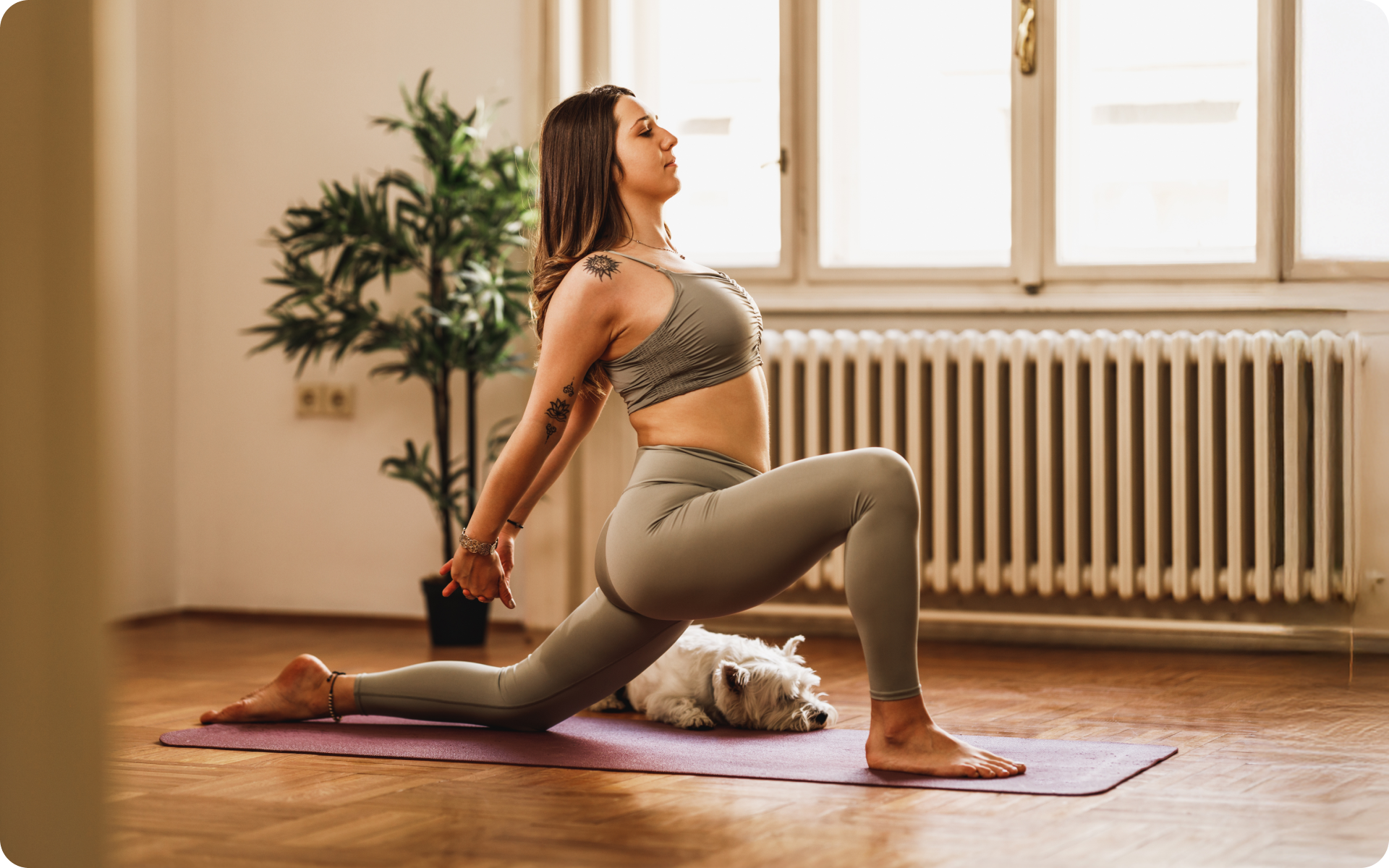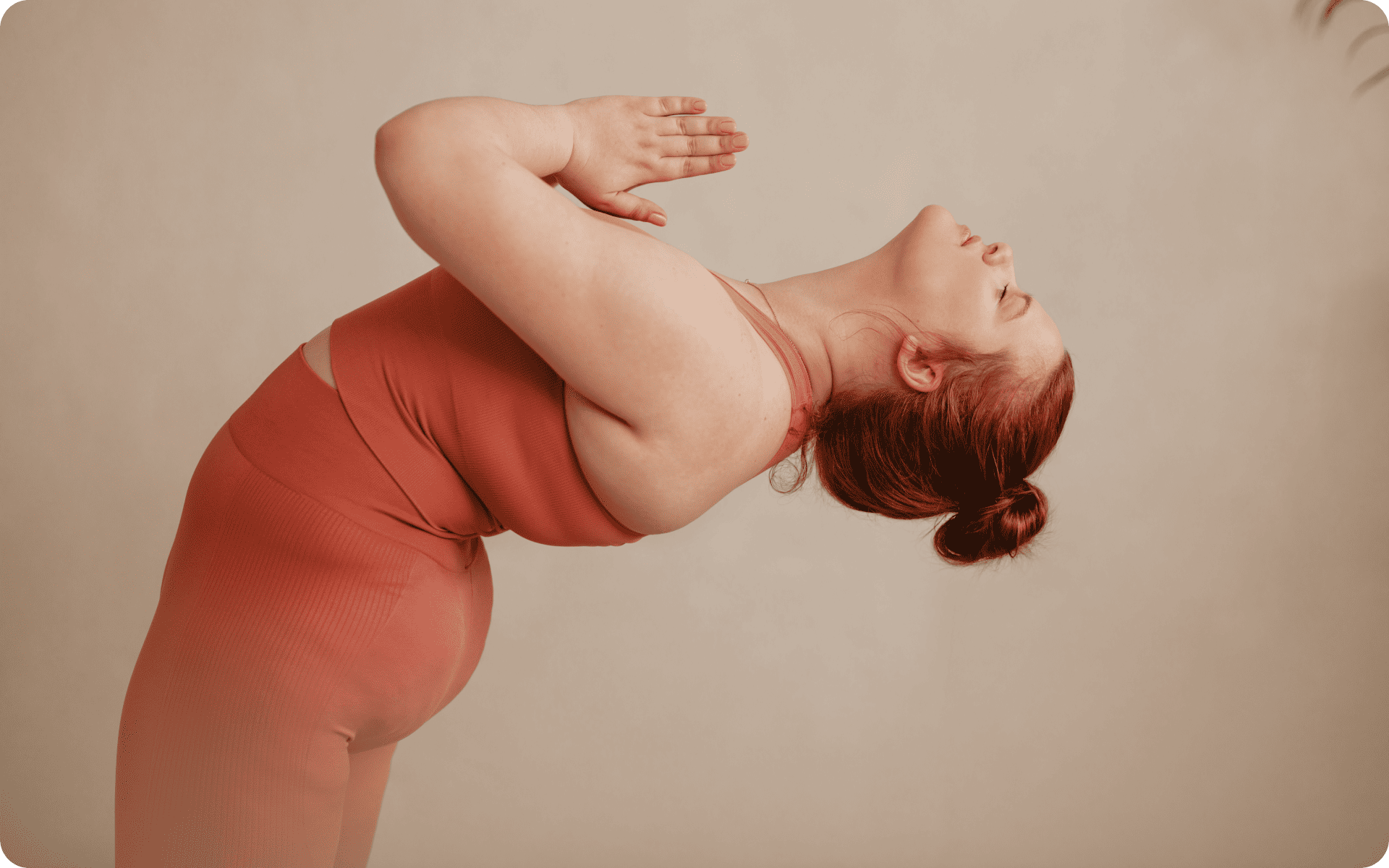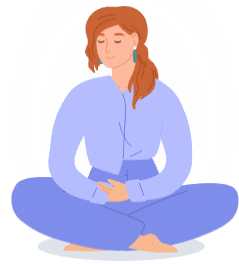Your alarm goes off, but your body feels sluggish and unprepared. Sound familiar? While reaching for that third cup of coffee might seem like the obvious solution, there’s a gentler, more sustainable way to energize your mornings.
A dedicated morning yoga to wake up routine can transform those sluggish starts into energized beginnings. These 10 carefully selected poses work with your body’s natural wake-up process, gradually increasing circulation, flexibility, and mental alertness.
You’ll discover how specific movements can replace that groggy feeling with genuine vitality and no caffeine crash included. Whether you’re new to yoga or looking to enhance your existing practice, this sequence offers a science-backed approach to starting your day with intention and energy.
Can Yoga Help You Wake Up?
Yes, yoga can be remarkably effective for morning awakening (1), and the science behind it is fascinating. Understanding your body’s early morning state helps explain why gentle movement is an effective natural energizer.
Your Morning Physiological State
When you first wake up, your body is in a unique transitional phase.
Your core body temperature is at its lowest point of the 24-hour cycle, typically dropping during sleep (2). Your nervous system is shifting from the parasympathetic (rest and digest) state to the sympathetic (alert and active) state, but this transition takes time (3).
Your muscles and joints have been inactive and relaxed for 6-8 hours (4).
Meanwhile, your cortisol levels naturally spike in the early morning hours (a phenomenon called the cortisol awakening response), which is supposed to help you feel alert and ready for the day (5).
- Improved Circulation And Blood Flow
Yoga poses specifically target circulation enhancement through gentle inversions and stretching movements (6).
When you move from Child’s Pose to Downward Facing Dog, for example, you’re encouraging blood flow from your extremities back toward your heart and brain.
This increased circulation delivers fresh oxygen and nutrients to tissues that have been relatively dormant during sleep. The result is a natural energy boost that doesn’t rely on stimulants like caffeine.
Reasons why BetterMe is a safe bet: a wide range of calorie-blasting workouts, finger-licking recipes, 24/7 support, challenges that’ll keep you on your best game, and that just scratches the surface! Start using our app and watch the magic happen.
- Enhanced Nervous System Activation
Yoga poses work directly to activate the autonomic nervous system to facilitate the transition from sleep to wakefulness (7, 8). Gentle backbends like Locust Pose activate your nervous system in a controlled way, gradually increasing alertness without causing the jittery effects associated with caffeine.
The coordinated breathing patterns inherent in yoga practice also help regulate your nervous system, ensuring the wake-up process feels smooth rather than jarring.
- Increased Core Body Temperature
Physical movement naturally raises your core body temperature, which signals to your body that it’s time to be awake and alert (9). The progressive nature of a yoga sequence (starting gently and gradually building intensity) mirrors your body’s natural awakening process.
This temperature increase also improves muscle elasticity and joint mobility, making your body feel more comfortable and ready for daily activities.
- Mental Clarity And Focus Enhancement
Yoga’s emphasis on present-moment awareness through breath coordination and mindful movement helps clear mental fog that often accompanies early morning hours.
This mind-body connection creates a foundation of focused attention that can carry through your entire day.
Research has shown that even brief periods of mindful movement can improve cognitive function and working memory (10), making morning yoga an investment in your mental performance throughout the day.
For more insights on how morning movement impacts your overall well-being, explore our guide to morning workout benefits.
Read more: How to Do Yoga and Calisthenics for a Balanced Routine
What Is The Best Yoga To Wake Up In The Morning?
The most effective morning yoga combines gentle, warming movements with gradual intensity building.
Hatha yoga provides an ideal morning foundation with its emphasis on static poses held for several breaths. This style allows your body to warm up while building strength and flexibility simultaneously and gradually.
The slower pace gives your nervous system time to fully transition from sleep to wakefulness without overwhelming your system. Hatha poses also emphasize proper alignment, which is crucial when your muscles are still warming up (11).
A modified vinyasa practice works well for mornings when you want slightly more movement. The key is keeping transitions slow and controlled, allowing your body to adapt to each new position.
Morning vinyasa should emphasize sun salutations and standing poses that encourage blood flow and improve mobility (12). Avoid aggressive arm balances or deep backbends until your body has had time to warm up thoroughly.
Somatic yoga combines traditional poses with an inward focus on how your body feels as you transition through movements (13).
Some mornings you’ll wake up naturally energetic, while others may require a gentler approach. Energetic mornings can handle more dynamic movements like Warriors and standing balances.
Lower-energy mornings benefit from staying grounded with seated poses, gentle twists, and supported backbends. The key is listening to your body’s signals and adapting accordingly.
Creating a morning workout routine that adapts to your daily energy levels ensures consistency while respecting your body’s natural rhythms.
What Is An Energizing Yoga To Wake Up Routine
We designed this 10-pose morning yoga sequence to awaken your entire body through progressively challenging movements.
Each pose builds upon the previous one, creating a natural flow that respects your morning physiology while building energy and focus.
Practice this sequence in 2 rounds, holding each pose for the specified number of breaths. Complete both rounds before moving into your final relaxation in Corpse Pose.
To center yourself for the practice:
Close your eyes and rub your palms together vigorously to generate warmth, then place them over your eyes for 10-15 seconds.
Open your eyes and perform gentle neck stretches, slowly turning your head left and right, then up and down.
Now, begin the sequence:
1. Child Pose (Balasana)
Child Pose serves as your gentle entry point, allowing your body to wake up gradually while establishing conscious breathing.
To do it (14):
- Begin by kneeling on your yoga mat, placing a blanket underneath your knees if needed for comfort.
- Lower yourself down using your palms in front of you, then exhale as you hinge forward from your hips, bringing your forehead toward the floor.
- Relax into the pose, pulling your belly button toward your spine.
- Hold for 4 slow, deep breaths, feeling your spine expand with each inhalation.
2. Locust Pose (Salabhasana)
Locust Pose activates your back muscles and nervous system while building core strength (15).
- From Child’s Pose, slowly lower yourself onto your belly, extending your arms and legs out to the sides of your body.
- Place your forehead on the mat and position your arms alongside your body, palms facing down.
- Inhale, then exhale as you lift your upper body and legs approximately 6 inches off the floor.
- Keep your neck in neutral alignment with your spine, gazing down at the mat.
- Engage your glutes and back muscles while reaching your arms behind you.
- Hold for 6 breaths
3. Downward Facing Dog Pose (Adho Mukha Svanasana)
This foundational pose increases circulation while building strength in your arms and shoulders (16).
- From lying on your belly, place your palms flat on the floor beside your chest.
- Tuck your toes under and exhale as you push through your palms, lifting your hips up and back.
- Create an inverted V-shape with your body, distributing weight evenly between hands and feet.
- Bend your knees slightly if needed to lengthen your spine and avoid rounding your back.
- Draw your shoulder blades down your back and engage your core muscles.
- Hold for 6 breaths, pedaling your feet gently to warm up your calves.
4. Warrior Pose I (Virabhadrasana I)
Warrior I builds strength in your legs while opening your hip flexors and energizing your entire system (17).
- From Downward Dog, step your left foot forward between your hands.
- Turn your right foot out to approximately 45 degrees and ground through both feet.
- Inhale as you rise, bringing your arms overhead in a prayer position or shoulder-width apart.
- Square your hips toward the front of your mat while keeping your right heel grounded.
- Bend your left knee directly over your ankle, creating a 90-degree angle if accessible.
- Lift through the crown of your head and engage your core for stability.
- Hold for 6 breaths, feeling the stretch through your hip flexors and the strength in your legs.
Transition: Keep your feet in the same position as you flow into Reverse Warrior.
5. Reverse Warrior Pose (Viparita Virabhadrasana)
This pose opens your side body while maintaining the leg strength built in Warrior I (18).
- From Warrior I, lower your right hand to rest lightly on the back of your right calf or thigh.
- Reach your left arm up and over your head, creating a gentle side bend.
- Keep your left knee tracking over your left ankle and avoid collapsing onto your right leg.
- Open through your chest and breathe deeply into the left side of your ribcage.
- Gaze up at your left hand if comfortable, or keep your neck neutral.
- Hold for 6 breaths, feeling the expansion through your side body.
6. Extended Triangle Pose (Utthita Trikonasana)
Triangle Pose stretches your hamstrings and side body while improving balance and focus (19).
- From Reverse Warrior, straighten your left leg and place your left hand on your shin, ankle, or a block.
- Extend your right arm straight up toward the ceiling, creating a long line from your right fingertips to your right foot.
- Keep both legs strong and engaged, with your left hip crease drawing back.
- Turn your chest toward the side wall rather than down toward the floor.
- Breathe deeply and maintain length through both sides of your waist.
- Hold for 4 breaths, focusing on the opening through your hamstrings and side body.
7. Intense Leg Stretch Pose (Prasarita Padottanasana)
This wide-legged forward fold increases circulation to your brain while stretching your inner thighs and hamstrings (20).
- From Triangle Pose, step your right foot to meet your left, then step both feet wide apart (about 3-4 feet).
- Turn your toes slightly inward and place your hands on your hips.
- Inhale to lengthen your spine, then exhale as you hinge forward from your hips.
- Place your hands on the floor directly under your shoulders, bending your elbows if needed.
- Keep your legs strong and engaged while folding deeper with each exhale.
- If accessible, bring the crown of your head toward the floor while maintaining length in your spine.
- Hold for 8 breaths, feeling the stretch through your inner thighs and the increased blood flow to your head.
8. Garland Pose (Malasana)
This deep squat opens your hips while building strength in your legs and core (21).
- From a standing position, bring your feet together with your toes turned slightly outward.
- Bend your knees and lower your hips down into a deep squat, keeping your heels on the ground if possible.
- Bring your palms together at the heart center and use your elbows to press your knees apart gently.
- Keep your spine long and your chest lifted, avoiding a rounded forward posture.
- If your heels lift, place a blanket or block underneath them for support.
- Engage your core muscles and breathe deeply into your belly.
- Hold for 6 breaths, focusing on the opening through your hips and the strength in your legs.
Whether you’re a workout beast or just a beginner making your first foray into the world of fitness and dieting – BetterMe has a lot to offer to both newbies and experts! Install the app and experience the versatility first-hand!
9. Thunderbolt Pose (Vajrasana)
The seated pose aids digestion while creating a moment of stillness and reflection (22).
- From Garland Pose, carefully lower your knees to the floor.
- Sit back on your heels, ensuring the tops of the feet are on the floor and toes are pointing straight back. Keep the heels close together rather than allowing them to open out to the sides.
- Place your hands on your thighs with palms facing down, or bring them into a prayer position at your heart.
- Lengthen through the crown of your head and gently draw your shoulder blades down your back.
- Close your eyes and focus on your natural breath rhythm.
- If sitting on your heels is uncomfortable, place a cushion or block between your calves and thighs.
- Notice the sense of grounding and stability this pose creates.
- Hold for 6-8 breaths, using this time to set an intention for your day.
Complete this entire sequence twice through before ending in Savasana for optimal energizing benefits.
10. Corpse Pose (Savasana)
Savasana allows your nervous system to integrate the benefits of your practice while maintaining the alert, peaceful state you’ve cultivated (23).
- Lie on your back with your legs extended and arms resting alongside your body, palms facing up.
- Close your eyes and allow your body to relax into the floor completely.
- Take several deep breaths, then let your breathing return to its natural rhythm.
- Scan through your body from head to toe, consciously releasing any remaining tension.
- Stay present and awake rather than allowing yourself to fall back asleep.
- Hold for 2-5 minutes, depending on your available time.
- To come out, wiggle your fingers and toes, then roll to one side before slowly sitting up.
If you’re new to morning movement, our morning yoga for beginners guide provides additional modifications and foundational information.
Is It Better To Do Yoga In The Morning On An Empty Stomach?
Practicing yoga on an empty stomach, known as fasted exercise, has both advantages and considerations that vary based on individual physiology and preferences.
Benefits Of Fasted Morning Yoga
Exercising in a fasted state can enhance fat oxidation, as your body has depleted glycogen stores from the overnight fast (24).
Digestive comfort is another significant advantage. Yoga poses involving twists, forward folds, and inversions are more comfortable when performed on an empty stomach, avoiding potential nausea or discomfort.
Many practitioners report improved mental clarity during fasted morning practice.
Without the energy demands of active digestion, more resources are available for focus and concentration.
Potential Drawbacks To Consider
Blood sugar stability can be a concern for some individuals, particularly those with diabetes or hypoglycemia. Morning cortisol levels will naturally rise, and adding exercise stress without adequate fuel might cause energy crashes later.
Performance limitations may occur during more intense practices. While gentle yoga typically doesn’t require significant fuel, dynamic sequences benefit from some pre-practice nutrition.
Individual tolerance varies widely. Some people feel energized and focused during fasted exercise, while others experience dizziness, weakness, or difficulty concentrating.
Research On Fasted Exercise
Recent research suggests that fasting can improve metabolic flexibility, your body’s ability to switch between burning carbohydrates and fats for fuel (25).
When combined with moderate-intensity activities like the yoga sequence outlined in this article, these benefits are most pronounced.
A 2010 study in the Journal of Physiology found that fasted exercise improved insulin sensitivity more than fed exercise, particularly in the morning hours (26).
Finding Your Personal Optimal Approach
The decision to practice fasted or fed depends on your individual response, health status, and goals.
Start by experimenting with both approaches during shorter, gentler practices.
If you choose to eat before practice, allow 30-60 minutes for digestion and opt for easily digestible foods like a banana or a small amount of yogurt.
Pay attention to your energy levels, focus, and physical comfort during and after practice to determine what works best for your body and schedule.
Read more: Is Yin Yoga Somatic Exercise? Everything You Need to Know
What Happens If I Do Yoga Every Morning?
Establishing a consistent morning yoga practice creates measurable changes in both your body and brain.
Here’s what you can expect in yoga to wake up for beginners:
- You’ll Experience Enhanced Mental Clarity
Your brain craves routine, and morning yoga provides the perfect neurological primer.
The combination of controlled breathing and mindful movement increases oxygen delivery to your prefrontal cortex, the region responsible for decision-making and focus (27).
Within 2 weeks of consistent practice, you’ll notice sharper concentration and improved problem-solving abilities throughout your day.
- Your Energy Levels Will Stabilize
Unlike caffeine-induced energy spikes followed by crashes, yoga creates sustainable vitality. The poses activate your nervous system naturally, promoting alertness without the jitters (28).
You’ll find yourself less dependent on external stimulants and more connected to your body’s natural energy rhythms.
- Your Sleep Quality Will Improve
Morning yoga helps regulate your circadian rhythm by establishing a clear wake signal for your body. Physical activity early in the day promotes deeper sleep at night, creating a positive feedback loop of rest and recovery (29, 30).
Most practitioners report falling asleep faster and waking up more refreshed within 3-4 weeks of starting their routine.
Can 20 Minutes Of Yoga A Day Benefit Me?
Absolutely. Research consistently shows that brief, consistent yoga practices deliver significant benefits for both physical and mental health (31).
The key lies in consistency rather than duration. Your nervous system responds better to regular, shorter practices than sporadic, longer sessions.
20 minutes allows you to complete a whole sequence that includes:
- 5 minutes: Breathing exercises and gentle warm-up
- 10 minutes: Core poses targeting major muscle groups
- 5 minutes: Cool-down and brief meditation
Yes, regular yoga practice can improve muscle tone and strength. Yoga poses require you to support your body weight in various positions, creating resistance training effects similar to bodyweight exercises (32). Poses like Downward Dog, Warrior sequences, and arm balances particularly target your core, arms, and legs. A consistent practice of 20-30 minutes daily can produce visible toning results within 6-8 weeks. A 30-minute morning yoga routine is an excellent starting point for long-term fitness. While morning yoga energizes, evening yoga can be beneficial for relaxation and sleep preparation. However, avoid vigorous or stimulating poses within 2 hours of bedtime. Focus on gentle stretches, restorative poses, and breathing exercises in the evening. Save energizing sequences like Sun Salutations for your morning routine. Morning yoga offers unique advantages that other times can’t match. Your body is naturally stiffer upon waking, making gentle stretching particularly beneficial. The quiet morning hours also provide minimal distractions, allowing for deeper focus and intention-setting. Additionally, morning practice establishes a positive tone for your entire day and ensures you complete your yoga before other obligations interfere. Physical flexibility improvements typically become noticeable within 2-3 weeks of consistent practice. Strength gains and improved balance often develop within 4-6 weeks. You may experience mental benefits, such as reduced stress, improved focus, and better mood regulation, immediately after your first session, and these benefits may become more pronounced within 1-2 weeks of regular practice.Frequently Asked Questions
Can yoga tone your body?
Is it OK to do yoga before bed?
Should I do yoga first thing in the morning?
How long does it take doing yoga to see results?
The Bottom Line
Building an energizing morning yoga routine doesn’t require perfection; it requires commitment. Start with just 20 minutes and gradually expand your practice as it becomes habitual.
Remember that yoga to wake up is about creating sustainable energy, not forcing your body into positions it’s not ready for.
Listen to your body and modify poses as needed. Your future self will thank you for the energy, clarity, and resilience that morning yoga provides.
DISCLAIMER:
This article is intended for general informational purposes only and does not serve to address individual circumstances. It is not a substitute for professional advice or help and should not be relied on for making any kind of decision-making. Any action taken as a direct or indirect result of the information in this article is entirely at your own risk and is your sole responsibility.
BetterMe, its content staff, and its medical advisors accept no responsibility for inaccuracies, errors, misstatements, inconsistencies, or omissions and specifically disclaim any liability, loss or risk, personal, professional or otherwise, which may be incurred as a consequence, directly or indirectly, of the use and/or application of any content.
You should always seek the advice of your physician or other qualified health provider with any questions you may have regarding a medical condition or your specific situation. Never disregard professional medical advice or delay seeking it because of BetterMe content. If you suspect or think you may have a medical emergency, call your doctor.
SOURCES:
- Ideal Time to Practice Yoga: Insights from Traditional Yoga Texts and Observations from Scientific Studies: A Narrative Review (2024, journals.lww.com)
- Sleep and thermoregulation (2020, sciencedirect.com)
- Asymmetry in Sympathetic and Vagal Activities During Sleep-Wake Transitions (2008, pmc.ncbi.nlm.nih.gov) 3
- Brain Basics: Understanding Sleep (2025, ninds.nih.gov)
- The circadian system modulates the cortisol awakening response in humans (2022, frontiersin.org)
- Enhancing Cardiovascular Health: The Positive Impact of Yoga on Blood Flow and Circulation (2024, researchgate.net)
- Immediate Effect of Yogic Postures on Autonomic Neural Responses (2019, journals.lww.com)
- Effect of long-term yoga training on autonomic function among the healthy adults (2022, pmc.ncbi.nlm.nih.gov)
- Effects of exercise on circadian rhythms in humans (2023, rontiersin.org)
- Does mindfulness training help working memory ‘work’ better? (2019, sciencedirect.com)
- Could hatha yoga be a health-related physical activity? (2016, researchgate.net)
- 14 Science-Backed Benefits of Vinyasa Yoga (2021, yogabasics.com)
- Combining Your Clinical Somatics and Yoga Practices (2019, somaticmovementcenter.com)
- Child’s pose (2023, mayoclinic.org)
- Locust Pose Yoga(Salabhasana) (n.d., tummee.com)
- Yoga Poses 101: How To Do a Downward Dog Pose (2025, health.clevelandclinic.org)
- Warrior Pose I Yoga(Virabhadrasana I) (n.d., tummee.com)
- Reverse Warrior Pose Yoga(Viparita Virabhadrasana) (n.d., tummee.com)
- Extended Triangle Pose Yoga(Utthita Trikonasana (n.d., tummee.com)
- Prasarita Padottanasana Yoga(Intense Leg Stretch Pose) (n.d., tummee.com)
- Malasana Yoga(Garland Pose) (n.d., tummee.com)
- Vajrasana Yoga(Thunderbolt Pose) (n.d., tummee.com)
- Corpse Pose Yoga(Savasana) (n.d., tummee.com)
- Effects of aerobic exercise performed in fasted v. fed state on fat and carbohydrate metabolism in adults: a systematic review and meta-analysis (2016, cambridge.org)
- Intermittent fasting influences immunity and metabolism (2024, sciencedirect.com)
- Training in the fasted state improves glucose tolerance during fat-rich diet (2010, pmc.ncbi.nlm.nih.gov)
- Yoga Effects on Brain Health: A Systematic Review of the Current Literature (2019, journals.sagepub.com)
- Neurophysiological and neurocognitive mechanisms underlying the effects of yoga-based practices: towards a comprehensive theoretical framework (2015, frontiersin.org)
- The effect of chronic yoga interventions on sleep quality in people with sleep disorders: a scoping review (2025, frontiersin.org)
- The Effect of Physical Activity on Sleep Quality and Sleep Disorder: A Systematic Review (2023, pmc.ncbi.nlm.nih.gov)
- Effects of Yoga on Mental and Physical Health: A Short Summary of Reviews (2012, pmc.ncbi.nlm.nih.gov)
- Exploring the therapeutic effects of yoga and its ability to increase quality of life (2011, pmc.ncbi.nlm.nih.gov)
